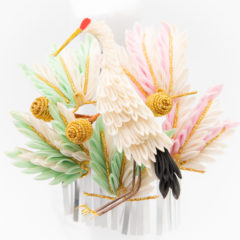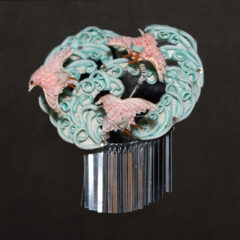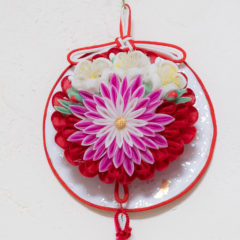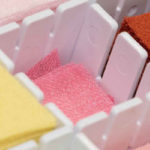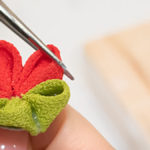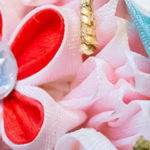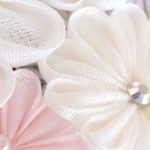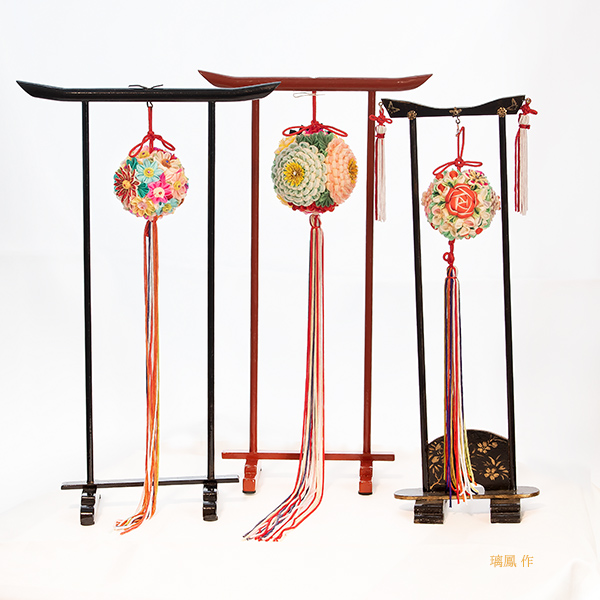
From Fusajiro Yoshioka, Women’s Art And Crafts of Tsumami-zaiku, 1914
Origin of Tsumami-zaiku
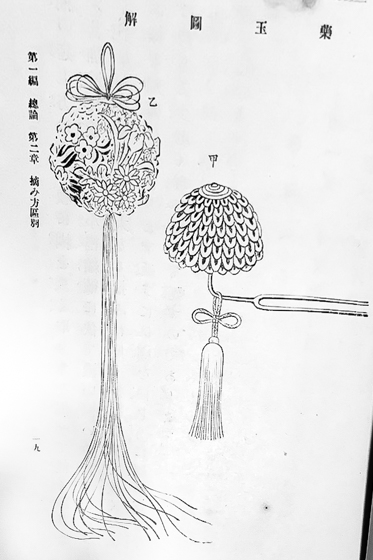
Around mid 1700s, Lord Yasuteru the handicraft lover, cut his wife’s old kimonos, sharpened tip of chopsticks, and created a way to fold “Maru-tsumami (round shaped tsumami)” and “Kaku(Ken)-tsumami (sharp pointed tsumami)”. He extend the glue paste on back of his hand and made ball shaped “Tsumami kanzashi” with Maru-tsumami. This was the beginning of Tsumami-zaiku.
*Tsumami-zaiku kusudama: drawing on the left / ball shaped Tsumami kanzashi: drawing on the right
He then worked on more with passion, bending the bamboo to make something like current tweezers, extended glue paste on the wooden board, and started thinking about making “sage-kusudama” (hanging type ball-shaped scent ornament).
(*Kusudama is a decoration that has existed since ancient times, and it was decorated with fresh flowers on a sphere made by bending bamboo)
“Sage-kusudama” made by Lord Yasuteru was decorated with 7 types of Tsumami-zaiku which was peony, cherry blossoms, plums, autumn leaves, tachibana, chrysanthemums, and satsuki azalea with scent inside, and 12 tassels using five-colors (red, blue, purple, yellow, and black).
He later presented this to Emperor Gomomozono, and it was decorated in the palace. Samurai women in the imperial palace who saw this began to make Tsumami-zaiku, and it spread to the country in the form of kanzashi. The initial Tsumami kanzashi was made by simple tsumami-zaiku like peony, cherry blossoms, and plums.


